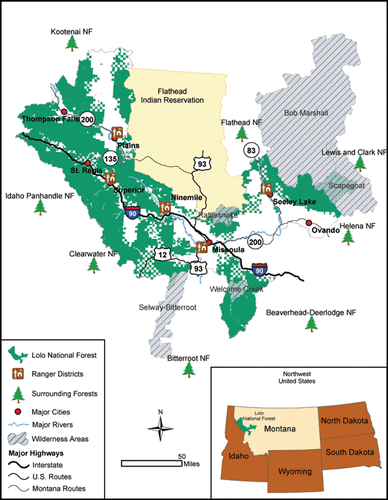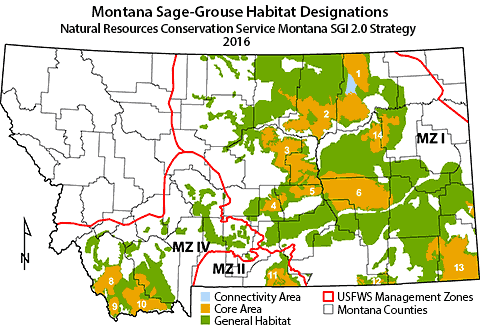It is great to see livestock producers standing up for common-sense conservation and leading the call for reason and collaboration.
http://www.northernag.net/AGNews/Ag...odge-to-the-Lolo-to-the-Custer-Gallatin….aspx
From the Beaverhead-Deerlodge to the Lolo to the Custer-Gallatin….
1/18/2018 4:03:00 PM/Categories: Popular Posts, General News, Today's Top 5, People in Ag, Livestock, Livestock Markets, Cattle, Sheep, National News, Organizations, Ag Issues, State Government
By Chris Skorupa, Bridger, Montana; Rancher/Owner & Manager, Beartooth Fertilizer, Member of the U.S. Cattlemen’s Association
From the Beaverhead-Deerlodge to the Lolo, the Greater Sage-Grouse makes its home in Montana’s National Forests for its unparalleled habitat conditions. As a species that has faced the label of a “threatened and endangered” species before, the sage grouse has emerged from that conversation as a success story for what can happen when ranchers, landowners, sportsmen, conservationists and federal government officials work together towards a common goal. As a result of these private-public relationships, the sage-grouse avoided being listed as threatened or endangered in 2015.
Now, the Administration is looking at reopening that conversation by reopening the 2015 Greater Sage-Grouse Management Plans for revision.
Despite years of work, countless meetings and millions of taxpayers’ dollars spent on working towards a solution, the Department of the Interior and the U.S. Forest Service are contemplating a complete rework of the plans that successfully avoided a listing in 2015.
Though the original plans are not perfect, they still represent a resounding consensus of various stakeholders. Over the past year, the Rural & Agriculture Council of America has hosted “Sage-Grouse Sidebar” meetings to bring together land and resource managers to discuss what updates can be made to the original plan that would assist with the implementation process. Specifically, we heard that broad-based stubble height requirements are ineffective, Sagebrush Focal Areas need revisions and habitat mapping needs to be based on real-life data.
We also heard that folks do not want to start over from square one. The management plans represent true grassroots action by many different stakeholder groups. The Administration must preserve the framework of the original management plans and only revise where it makes scientific sense when implementation of the plans on the ground shows the plans need updating, and when it is agreed upon by the greater conservation community. We need to respect the process that built the original plans and agree to get to work on applying on-the-ground and science-driven management strategies. The saying remains, “What’s good for the herd is good for the bird”; landowners, users, and managers worked to achieve this goal before, and we must now work to maintain it.
Comments on the Forest Service Sage Grouse plan close tomorrow, Friday, January 19th click on this link to make your comments.
http://www.northernag.net/AGNews/Ag...odge-to-the-Lolo-to-the-Custer-Gallatin….aspx
From the Beaverhead-Deerlodge to the Lolo to the Custer-Gallatin….
1/18/2018 4:03:00 PM/Categories: Popular Posts, General News, Today's Top 5, People in Ag, Livestock, Livestock Markets, Cattle, Sheep, National News, Organizations, Ag Issues, State Government
By Chris Skorupa, Bridger, Montana; Rancher/Owner & Manager, Beartooth Fertilizer, Member of the U.S. Cattlemen’s Association
From the Beaverhead-Deerlodge to the Lolo, the Greater Sage-Grouse makes its home in Montana’s National Forests for its unparalleled habitat conditions. As a species that has faced the label of a “threatened and endangered” species before, the sage grouse has emerged from that conversation as a success story for what can happen when ranchers, landowners, sportsmen, conservationists and federal government officials work together towards a common goal. As a result of these private-public relationships, the sage-grouse avoided being listed as threatened or endangered in 2015.
Now, the Administration is looking at reopening that conversation by reopening the 2015 Greater Sage-Grouse Management Plans for revision.
Despite years of work, countless meetings and millions of taxpayers’ dollars spent on working towards a solution, the Department of the Interior and the U.S. Forest Service are contemplating a complete rework of the plans that successfully avoided a listing in 2015.
Though the original plans are not perfect, they still represent a resounding consensus of various stakeholders. Over the past year, the Rural & Agriculture Council of America has hosted “Sage-Grouse Sidebar” meetings to bring together land and resource managers to discuss what updates can be made to the original plan that would assist with the implementation process. Specifically, we heard that broad-based stubble height requirements are ineffective, Sagebrush Focal Areas need revisions and habitat mapping needs to be based on real-life data.
We also heard that folks do not want to start over from square one. The management plans represent true grassroots action by many different stakeholder groups. The Administration must preserve the framework of the original management plans and only revise where it makes scientific sense when implementation of the plans on the ground shows the plans need updating, and when it is agreed upon by the greater conservation community. We need to respect the process that built the original plans and agree to get to work on applying on-the-ground and science-driven management strategies. The saying remains, “What’s good for the herd is good for the bird”; landowners, users, and managers worked to achieve this goal before, and we must now work to maintain it.
Comments on the Forest Service Sage Grouse plan close tomorrow, Friday, January 19th click on this link to make your comments.






